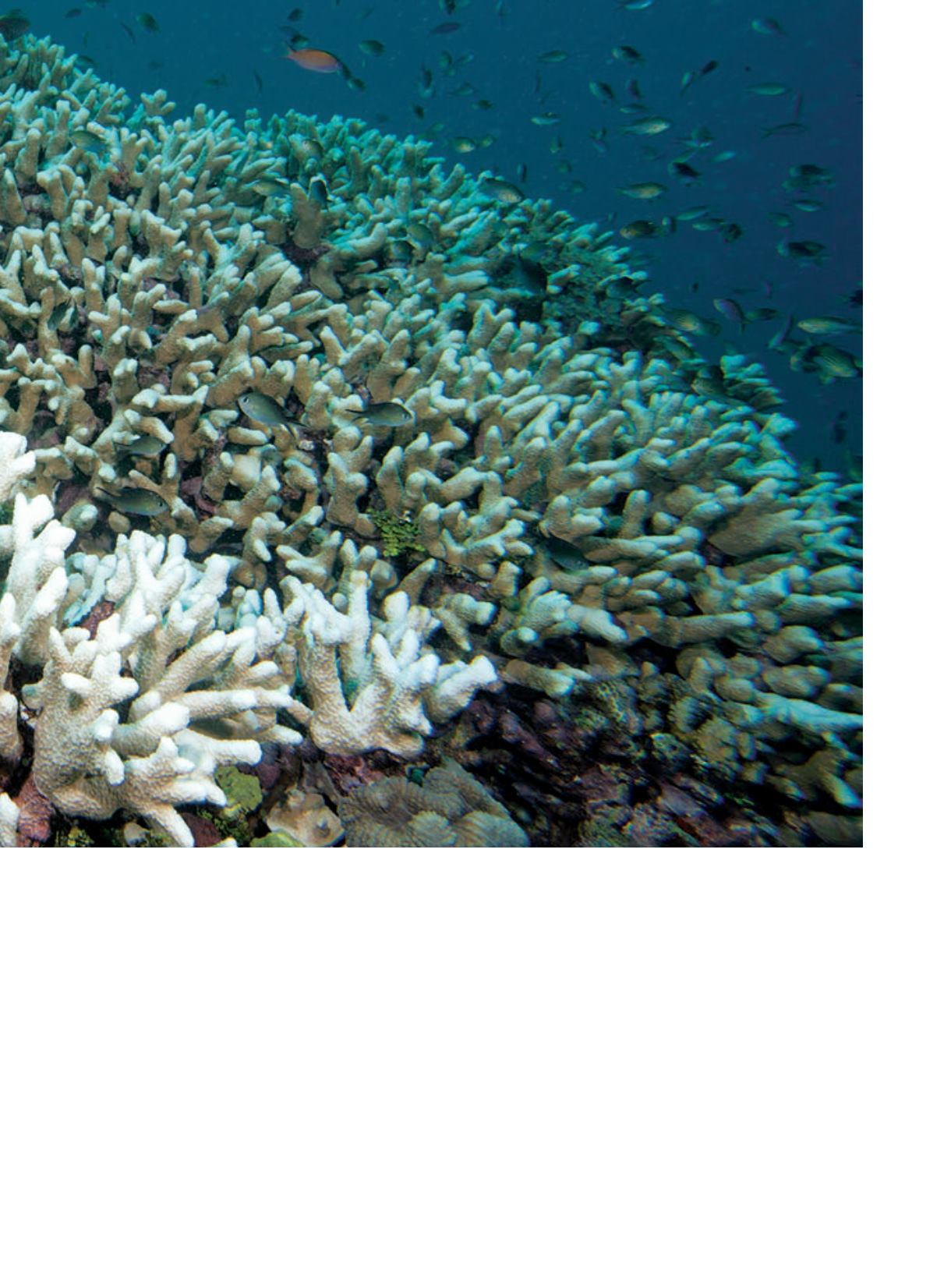
 ALERTDIVER.COM
ALERTDIVER.COM
|
103
Corals bleach, or turn white, when their
symbiotic algae (zooxanthellae) are
expelled from the corals’ tissues due to
stressors such as excessively warm water.
Bleached corals can and do recover
when favorable conditions resume.
and November 2016 to determine how much of the
bleached coral survived. Data published by the Coral
CoE included the following:
• The entire reef system was not affected by the recent
bleaching event. The GBR is 1,430 miles long, and its
southern portion is much farther away from the
equator than its northern portion. The bottom two-
thirds of the reef suffered minimal to no mortality.
The majority of the impact is in the northern third of
the reef, a region that spans approximately 600 miles
from Port Douglas to Papua New Guinea. This region
is not commonly visited by recreational dive boats.
Even within the northern region the overall effects
of the bleaching event varied. The inshore northern
section, where the water is shallower, felt the brunt
of the 2016 event.
• March-April 2016 data showed the following
amounts of severe bleaching in the GBR:
—81 percent in the northern section (north of Port Douglas)
— 33 percent in the central section (Mackay north to
Port Douglas)
— 1 percent in the southern section (south of Mackay)
• October-November 2016 data showed the following
amounts of coral mortality in the GBR:
— 26 percent in the far north (offshore)
— 67 percent in the north
— 6 percent in the central section
— 1 percent in the south
WHAT IS BLEACHED CORAL?
Bleached coral is not dead coral. The bleaching data
from the March-April 2016 surveys differ from the
STEPHEN FRINK


















